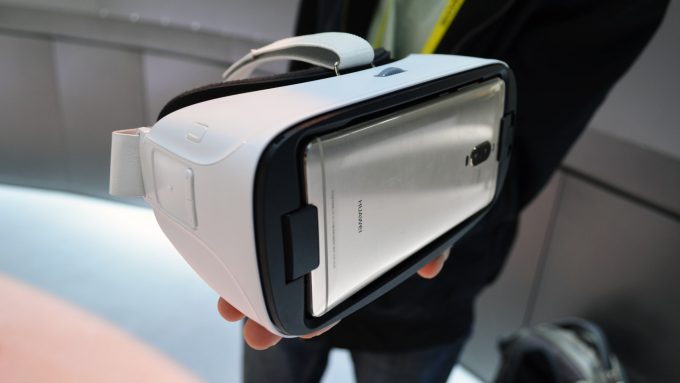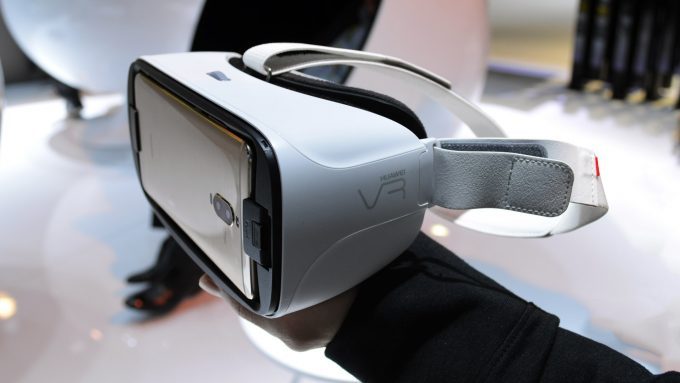Frank He goes hands-on with Huawei’s first Google Daydream compatible headset at CES 2017, one which takes cues from both the Samsung and Oculus engineered Gear VR and its closest stable mate, the Daydream View headset.
Huawei’s Daydream compatible VR headset, into which slots a Huawei Mate 9 Pro or Porsche Design Mate 9 smartphone, was shown off to the public at CES, and I’ve had the pleasure of trying it myself.
The headset looks a lot like Samsung’s Gear VR with similar features, but runs on Google’s new VR platform, Daydream. Despite the exterior, the headset still has a lot of similarities with Google’s headset in terms of the visual experience. I’ll compare Huawei’s VR headset to Google’s and Samsung’s, with an emphasis on Google’s Daydream View as the software is the same, making it much more comparable. What I can say immediately is that it took some of the good things about the Gear VR and applied them to Google’s Daydream platform.
Build


That said, the model Huawei demonstrated at CES did not include a functional touchpad or proximity sensor. Given that the Daydream controller is a requirement for all Daydream apps, it isn’t clear if the touchpad will be enabled for Daydream use, or if it’s there to make the headset also compatible with other VR platforms (like those that the phone would likely use in China).
Visuals
The FOV seemed slightly larger on Huawei’s VR headset when compared with the Daydream View, but it seems to exhibit more warping and distortion around the far edges of the lens. Other than that, the visuals were mostly the same. Chromatic aberration, resolution, head rotation tracking, and brightness all seemed the same to my eyes. So with that said, if you know the difference between the Daydream View and the Gear VR, Huawei’s new device will fall toward the Daydream end of the spectrum.
Comfort
While the Daydream View is lighter, it is built with some relatively hard foam padding. The foam used in Huawei’s VR headset on the other hand had a very soft feeling to it, but at the same time the headset was quite heavy. If the Daydream View had softer foam, it would be the preferable option for comfort, but as they are, which ends up being the most comfortable for long term use may depend on the individual’s facial structure.
As for battery life, heat, and other aspects related to usage with time, I can’t judge much from my short demo, but it does seem like it would perform better at least in terms of heat, because Huawei’s VR headset uses a direct attachment like the Gear VR without any lids keeping the heat inside, whereas you have to close a lid on the phone with the Daydream View.
With those differences in mind, and especially with the ability to tune the focus, Huawei’s VR headset comes across as a very competent alternative to Google’s Daydream View, working on the same software platform, but it’s compatibility is restricted to Huawei’s Mate Pro 9. Price and availability remain unknown at the moment, but if done right, the headset has the potential to introduce VR to even more people as one of the first Daydream compatible headsets from a third-party.


